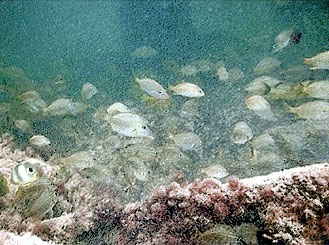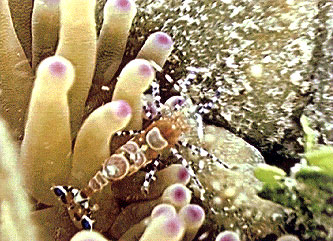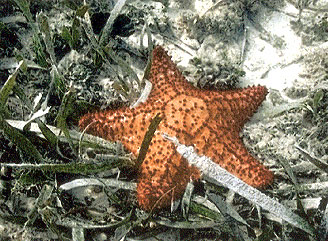
If the biota, in the course of aeons, has built something we like but do not understand, then who but a fool would discard seemingly useless parts? To keep every cog and wheel is the first precaution of intelligent tinkering. Aldo Leopold, Round River, 1993.
Reef Relief Founders.com



KEY WEST MARINE PARK
Reef Relief partnered with the City of Key West to establish this new shore underwater park with funding from the Casa Marina Resort and the State of Florida. Craig Quirolo installed a series of demarcation buoys that separate boaters from swimmers and the city approved an ordinance establishing no motor swim lanes and vessel access lanes.
MARINE PARK
IMAGE SLIDE SHOW &
PHOTO GALLERY
Key West Marine Park Summary
The creation of the Key West Marine Park was a cooperative project between the City of Key West and Reef Relief. The objective was to create a safe swim lane on the south side of the island from the shoreline out 600 feet, from a point near the White Street Pier, westward to a point near the foot of Duval Street and to designate areas for use by boaters as well. The swim and boating zones are marked by demarcation buoys.
Motorized vessels are prohibited from entering the swim lane, however two entry lanes have been established for continued access to the shore by vessels. The existing channel, marking the entry to the Casa Marina Docks is one of the entry lanes. The location of the second entry lane is the Reach beach. The exact position of the swim zone demarcation buoys and entry lanes was established in cooperation with the commercial boat companies and property owners in this area. All upland property owners support the park's creation.
Considerations were made for people who fish from the White Street Pier. It is important to keep swimmers and snorkelers away from fishing gear.



The Key West Marine Park is home to an incredible array of interesting marinelife and corals.
Sedimentation is one of the biggest threats to coral.
Visibility has been relatively poor in this area over the past few years primarily because of sedimentation caused by land-based runoff. A second purpose of establishing this near-shore Marine Park was to focus on water quality problems that we have the ability to eliminate.
The City of Key West has rebuilt the White Street Pier reducing sediment build-up, replaced all of the sewer lines in the City, eliminating the sewage outfall and we are scheduled to re-plumb storm water runoff drains through out the island. There is no other developed island in the Caribbean and possibly the world that has rebuilt their infrastructure as we have. Near-shore water quality should be improving as a result of these actions.
The area of the Marine Park is typical of many tourist destinations in the Caribbean where swimmers, snorkelers, jet skis, para sails and fishermen share the same body of water. Swimmers are often put at risk because there is no safe haven free from motorized vessels, especially jet skis. Designating areas 'swim only' zones and demarking those areas with buoys is the most common way of dealing with the conflict between boaters and swimmers. Demarcation buoys have been installed, creating swim lanes and two vessel access lanes.
The designation of two well-marked entry lanes for vessels to approach shore allows the current boating activity to continue. Motorized vessels approach shore inside of these entry lanes at idle speed. Abundant space would be allocated near the Casa marina Dock to provide safe maneuvering and docking. Designated swim areas are preferred by boat captains who do not like to navigate around free-roaming swimmers while approaching shore.
The Key West Marine Park was established as a voluntary no harvest zone to enhance the experience for those who snorkel in the park and also provides a protected habitat for fish. The White Street Pier is not included within the boundaries of the park to allow fishing activities on the pier to continue. Reef Relief is seeking permits to establish fish habitats within the area of the Park. Natural reef habitats composed of limestone boulders provide habitat for various species of fish and also provide hard substrate for corals to attach to. Fish habitats would provide anglers with increased catches on nearby fishing piers as the fish mature and migrate out of the protected area. These habitats would be strategically placed, away from the marked boat entry lanes, to attract snorkelers away from the vessel traffic.
Reef Relief accepted responsibility for raising grant funds, applying for permits, installing the demarcation buoys and then producing educational signage and brochures for the marine park. It also maintained the park for the first five years, after which it was turned over to the City of Key West, that currently maintains the park. The city passed an ordinance establishing the park and revised its submerged lands management agreement with the state of Florida in order to establish the park. This grassroots partnership enable the City to achieve greater protection for its Oceanside shoreline and manage multiple uses through the partnership with Reef Relief.
















